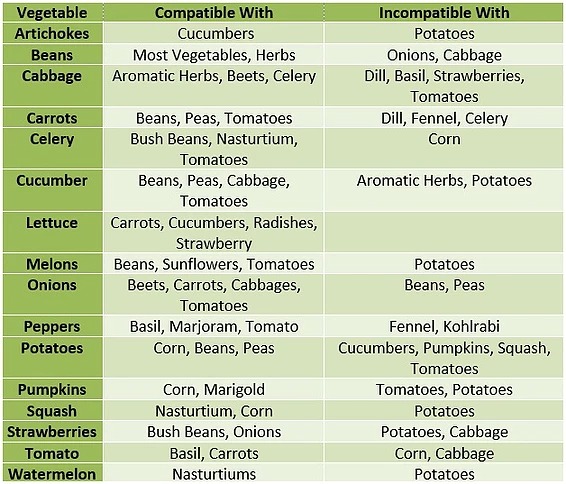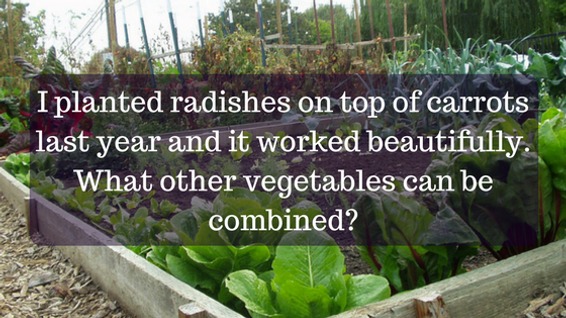Companion Planting is the art of planting different plants together to their mutual benefit. You can use companion planting to intensify the flavor of vegetables, enrich the soil, attract beneficial insects and repel pests. One of the most famous examples of this kind of cooperative planting is the Native American tradition of The Three Sisters
The Three Sisters
Native Americans throughout North America relied on three principal crops for survival; corn, beans and squash. These three vegetables were named The Three Sisters by the Iroquois. All three plants are perfectly suited to work together and support each other. The corn grows tall and provides a form for the beans to climb up, the beans enrich the soil and the large squash leaves provide a natural mulch for all three.

Some Common Companions You can put the ancient tradition of companion planting into practice when planting your own veggie garden. To start with, Basil and Marigolds are good companions to almost anything in the garden. Basil helps intensify the flavors of nearby vegetables, especially tomatoes. Marigolds help promote growth while also keeping insects away.
Below is a table of some more of the most common and traditional planting companions. Companion planting is more of an art than a science, so not every combination is listed. Give these a try and see what works in your garden!


